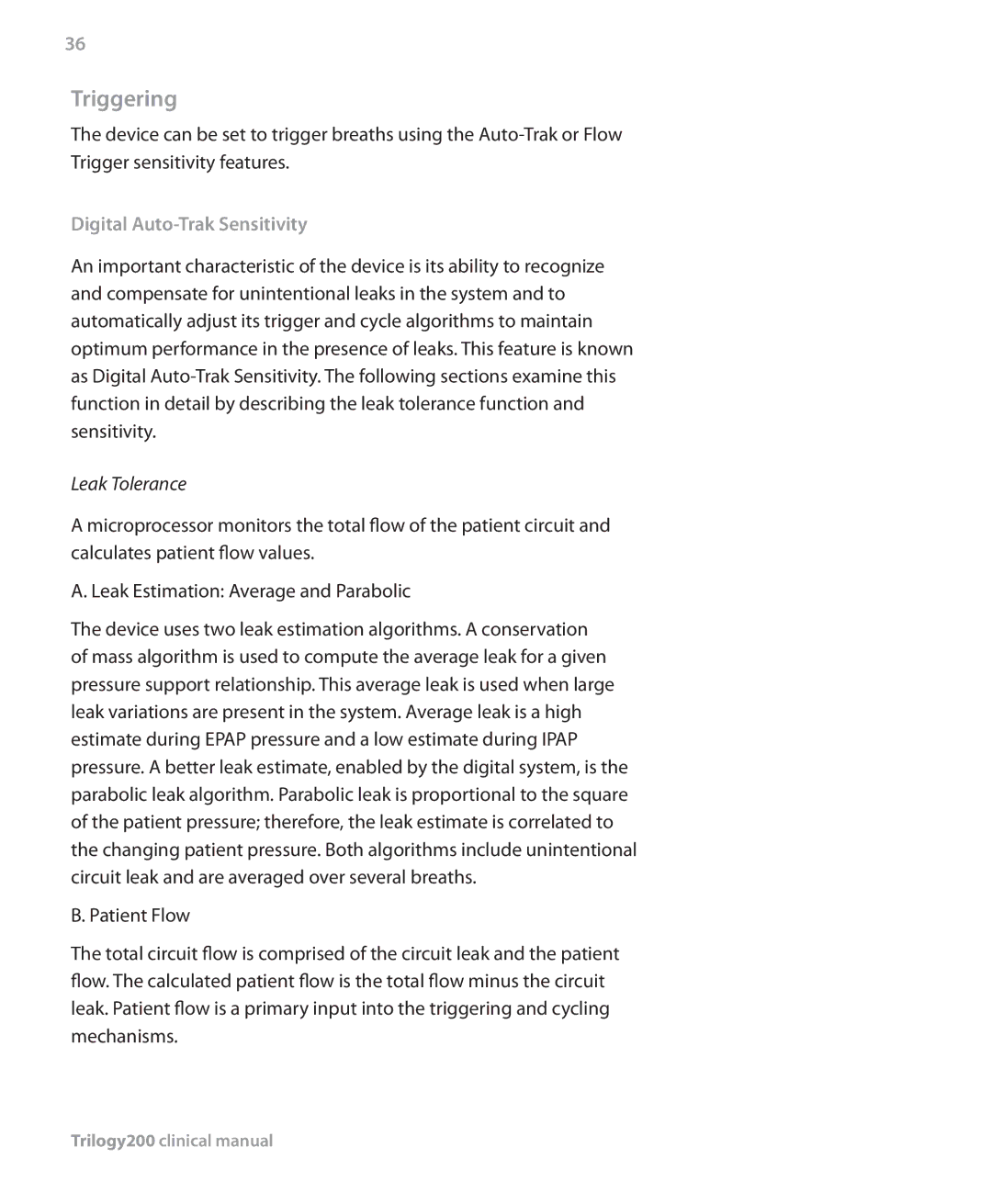36
Triggering
The device can be set to trigger breaths using the
Digital Auto-Trak Sensitivity
An important characteristic of the device is its ability to recognize and compensate for unintentional leaks in the system and to automatically adjust its trigger and cycle algorithms to maintain optimum performance in the presence of leaks. This feature is known as Digital
Leak Tolerance
A microprocessor monitors the total flow of the patient circuit and calculates patient flow values.
A. Leak Estimation: Average and Parabolic
The device uses two leak estimation algorithms. A conservation of mass algorithm is used to compute the average leak for a given pressure support relationship. This average leak is used when large leak variations are present in the system. Average leak is a high estimate during EPAP pressure and a low estimate during IPAP pressure. A better leak estimate, enabled by the digital system, is the parabolic leak algorithm. Parabolic leak is proportional to the square of the patient pressure; therefore, the leak estimate is correlated to the changing patient pressure. Both algorithms include unintentional circuit leak and are averaged over several breaths.
B. Patient Flow
The total circuit flow is comprised of the circuit leak and the patient flow. The calculated patient flow is the total flow minus the circuit leak. Patient flow is a primary input into the triggering and cycling mechanisms.
